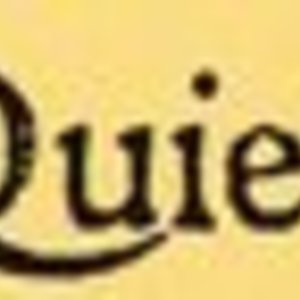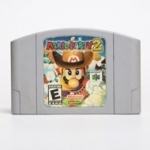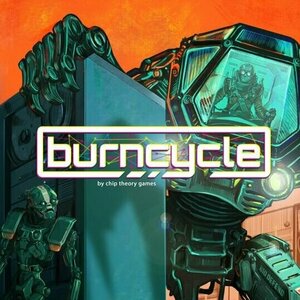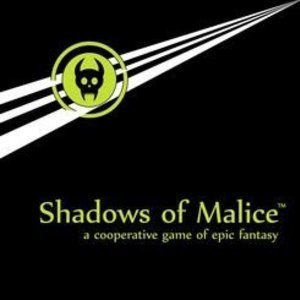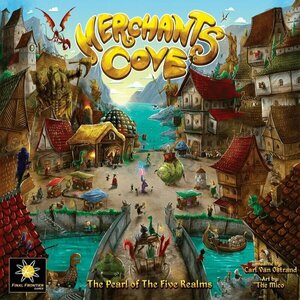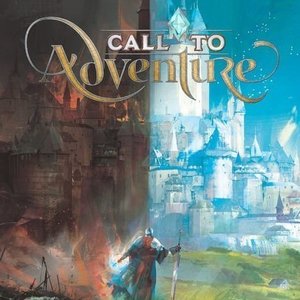Search
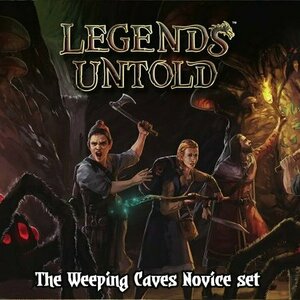
Legends Untold: The Weeping Caves Novice Set
Tabletop Game
Legends Untold is a co-operative card based adventure game for 1-8 players(4 players in the basic...
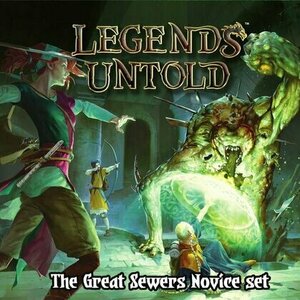
Legends Untold: The Great Sewers Novice Set
Tabletop Game
Legends Untold is a co-operative card based adventure game for 1-8 players(4 players in the basic...
Johnny-Mac Willcox-Beney (10 KP) rated The Quiet Year in Tabletop Games
Jul 20, 2019
Gorgeous illustrations (5 more)
No prep needed
Good inspiration for post apocalyptic settings
Great first TTRPG
Cheap! ($6)
Replayable for different communities
Fantastic Post-Apocalyptic Story Gaming
Absolutely gorgeous single-session GMless story centered game. Players must navigate a year in a community after an apocalypse. Each week is represented by a card from a standard 52 card deck, each suit a season.
When a card is drawn it introduces a new choice to be made by a player about your community, with limited organised discussions about these choices replicating failures in communications in real communities. This choice is then represented on a map of your community that you build as you play.
This game is absolutely brilliant as a first TTRPG, a first session to build the setting for a post apocalyptic game in another system or just as a standalone one shot. It only takes one 2-3 hour session, some paper, pens, 6 sided dice, a standard deck of playing cards and the PDF. The questions it asks prompt very interesting ideas about your community to build somewhere that feels alive and fully fleshed out. A great buy!
When a card is drawn it introduces a new choice to be made by a player about your community, with limited organised discussions about these choices replicating failures in communications in real communities. This choice is then represented on a map of your community that you build as you play.
This game is absolutely brilliant as a first TTRPG, a first session to build the setting for a post apocalyptic game in another system or just as a standalone one shot. It only takes one 2-3 hour session, some paper, pens, 6 sided dice, a standard deck of playing cards and the PDF. The questions it asks prompt very interesting ideas about your community to build somewhere that feels alive and fully fleshed out. A great buy!
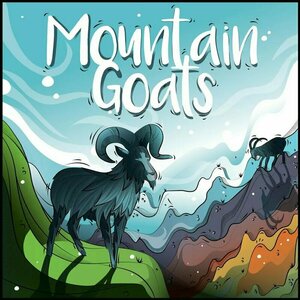
Mountain Goats
Tabletop Game
In Mountain Goats you work to move your goats to the top of 6 different mountains where they can...
Matthew Krueger (10051 KP) rated Mario Party 2 in Video Games
Dec 23, 2020
Let The Party Continue
Mario 2- is the sequel to Mario Party in the Mario Party franchise. That came out a year later on the N64. New boards, new minigames, same charcters, just with the number 2 on it.
In the game's storyline, Mario and his friends create a world built from their dreams and get into a debate over who the new world would be named after. When Bowser arrives and invades the land, the group takes Toad's suggestion to name it after the "Super Star" who defeats Bowser.
Mario Party 2 includes multiplayer compatibility; each game on a board map consists of four players, including at least one human player and up to four. Any character who is not controlled by a human will instead be controlled by the game as a computer-controlled character.
The goal of Mario Party 2 is to collect the most Stars within the allotted amount of turns. Stars must be purchased from Toad with coins, which can be earned through a selection from one of 64 mini-games that is played once at the end of each turn.
The players can obtain items for use on the board, and can each carry one at a time. If a player is carrying an item, they can use it before rolling the dice block. Items can aid the player in such ways as providing additional dice blocks or stealing another player's item. One item, the Skeleton Key, allows the player to use shortcuts located on each board map.
During the final five turns of a game, a one-on-one Duel mini-game is initiated when a player lands on the same space as another.
Its Mario Party but better. Why did nintendo not bring back the costumes. Only in this one, you see Mario dress up as a pirate. Come on Nintendo, Mario Party uhhh i lost count, better have it.
I like this one better than One. One is still good, but i fell this one is better.
In the game's storyline, Mario and his friends create a world built from their dreams and get into a debate over who the new world would be named after. When Bowser arrives and invades the land, the group takes Toad's suggestion to name it after the "Super Star" who defeats Bowser.
Mario Party 2 includes multiplayer compatibility; each game on a board map consists of four players, including at least one human player and up to four. Any character who is not controlled by a human will instead be controlled by the game as a computer-controlled character.
The goal of Mario Party 2 is to collect the most Stars within the allotted amount of turns. Stars must be purchased from Toad with coins, which can be earned through a selection from one of 64 mini-games that is played once at the end of each turn.
The players can obtain items for use on the board, and can each carry one at a time. If a player is carrying an item, they can use it before rolling the dice block. Items can aid the player in such ways as providing additional dice blocks or stealing another player's item. One item, the Skeleton Key, allows the player to use shortcuts located on each board map.
During the final five turns of a game, a one-on-one Duel mini-game is initiated when a player lands on the same space as another.
Its Mario Party but better. Why did nintendo not bring back the costumes. Only in this one, you see Mario dress up as a pirate. Come on Nintendo, Mario Party uhhh i lost count, better have it.
I like this one better than One. One is still good, but i fell this one is better.
Paul Kellett (118 KP) rated Shadows of Malice in Tabletop Games
May 8, 2019
Great framework for narrating an adventure (2 more)
Good solo game
Interesting mechanisms
A lot of fiddly tokens (1 more)
Slightly heavy rules
A different take on the adventure board game
Shadows of Malice is an interesting take on the adventure game. Aside from the introduction explaining that you are heroes on a quest to find and activate mystical light wells and defeat the demon and his shadows before they can break through from the shadow realm and capture the wells for evil, there is no fancy artwork, immersive flavour text or even the well known fantasy monsters.
Instead, you get plain cards with simple line art and either just an icon/dice modifier or a short line of text explaining the effect. These cards are items of armour, weapons or other loot, potions, skill masteries, fate effects or abilities. A selection of these make up your character. Again, there are no defined heroes, you can be whatever you fancy being.
When you encounter a monster you roll 3d6 against a chart which will define the creature's species and its strength. Creature types are things like "Avian" and "Reptilian" so you can imagine fighting a dinosaur, a giant eagle or whatever fantastic creature you desire.
This makes the game a great framework to roleplay in. You are never stuck encountering the same things again and again. On the minus side, if you don't have a good imagination, it boils down to just rolling dice and beating target numbers. If you want a game to give you a story to follow, SoM is not that game.
The rules are good, if a little heavy but after a game or two it should soon click and it's mostly straight forward. The designer has recently just uploaded a revised rulebook to BGG which streamlines a number of things.
SoM comes with 4 large landscape hex tiles plus a shadow realm tile and you can choose any number of tiles to arrange in any position around the shadow realm tile. Each tile is divided into a number of smaller hexes with varying terrain and locations printed on them. This is the world you will be exploring and, despite being tiny compared to other game boards, each tile adds about an hour to the play time.
Gameplay involves exploring the land fighting creatures, gaining loot, visiting cities to trade goods or mystic seers to buy potions while searching for the special light wells that you must take control of.
In between player turns, the shadows act. They begin confined to the shadow realm but as the rounds progress, barriers fall and the shadows are more likely to find a way out to manifest in the land. Once there they start searching for the light wells and it's game over if they get to them first .
This makes for a tense cat and mouse with your heroes racing to either get to a well or intercept the demons on route.
Instead, you get plain cards with simple line art and either just an icon/dice modifier or a short line of text explaining the effect. These cards are items of armour, weapons or other loot, potions, skill masteries, fate effects or abilities. A selection of these make up your character. Again, there are no defined heroes, you can be whatever you fancy being.
When you encounter a monster you roll 3d6 against a chart which will define the creature's species and its strength. Creature types are things like "Avian" and "Reptilian" so you can imagine fighting a dinosaur, a giant eagle or whatever fantastic creature you desire.
This makes the game a great framework to roleplay in. You are never stuck encountering the same things again and again. On the minus side, if you don't have a good imagination, it boils down to just rolling dice and beating target numbers. If you want a game to give you a story to follow, SoM is not that game.
The rules are good, if a little heavy but after a game or two it should soon click and it's mostly straight forward. The designer has recently just uploaded a revised rulebook to BGG which streamlines a number of things.
SoM comes with 4 large landscape hex tiles plus a shadow realm tile and you can choose any number of tiles to arrange in any position around the shadow realm tile. Each tile is divided into a number of smaller hexes with varying terrain and locations printed on them. This is the world you will be exploring and, despite being tiny compared to other game boards, each tile adds about an hour to the play time.
Gameplay involves exploring the land fighting creatures, gaining loot, visiting cities to trade goods or mystic seers to buy potions while searching for the special light wells that you must take control of.
In between player turns, the shadows act. They begin confined to the shadow realm but as the rounds progress, barriers fall and the shadows are more likely to find a way out to manifest in the land. Once there they start searching for the light wells and it's game over if they get to them first .
This makes for a tense cat and mouse with your heroes racing to either get to a well or intercept the demons on route.
Peter Shephard (2822 KP) rated Merchants Cove in Tabletop Games
Jun 4, 2021
Great range of character options (4 more)
Single player option
Great looking board and pieces
Expansions are great
Every character is like playing a different subgame
Great and Varied game
I backed this on Kickstarter, with the Oracle, Dragon Rancher and Inn Keeper expansions. Over the course of our first evening playing, my wife and I had 1 game of learning the rules, then another three games fairly quickly.
The pieces (ships, meeples, and individual gaming boards) are fantastic (although a couple are a little fiddly/weak) and every single character has their own flavour and type of sub-game;
The Alchemist makes potions by drawing marbles, firstly from a bag, then from a "decanter" (echoes of Quacks of Quiddlingberg)
The Blacksmith makes weapons and armour from dice rolls and combos in furnaces (not quite Yahtzee)
The Captain sails her fleet of ships to go fishing and treasure hunting using a spinning compass mechanism (can't put my finger what this reminds me of)
The Chronomancer (a great Back to the Future nod) travels through time portals to get pieces of technology, using a slide-and-shift board (like a mini Labrynth)
The Dragon rancher (believe it or not) hatches, raises and sells dragons; a couple of mechanics which work well together (even if one is shovelling poop) but not really like a game I've played
The Innkeeper is a great sub-sub-game; he can only sell drinks at one point, but he can put people up in his Inn which gives a bonus. A little bit of prediction work, but not like a other game I can think of.
The Oracle uses a scatter/dish for her fetishes and dice, and this limits what she can do - but I'd say she has the most varied scope of games (dots, predictions, and a few others)
The aim of the game is to be the Merchant who makes the most money, without attracting too much Corruption. Each game is played over three days, and each day has a limited amount of time. Each task the characters do has a different amount of time-cost - it might take 1h to brew potions, but it takes 2h to get ingredients from the decanter and prepare the potions. At several points each day, random Adventurers are drawn from the bag, and put into the travelling ships, as chosen by the drawer. However, there are also rogues who take up space and don't buy anything!
My only real complaint with the game is the comparatively long set up (5-10 minutes seems to be our average) for a 30-45m play time for 2 players - but it is really worth it. If/when this goes to retail, I'd say every gaming group who enjoys a combination of resource management, meeple and worker placement, and beautiful set-piece games, should give this a try.
The pieces (ships, meeples, and individual gaming boards) are fantastic (although a couple are a little fiddly/weak) and every single character has their own flavour and type of sub-game;
The Alchemist makes potions by drawing marbles, firstly from a bag, then from a "decanter" (echoes of Quacks of Quiddlingberg)
The Blacksmith makes weapons and armour from dice rolls and combos in furnaces (not quite Yahtzee)
The Captain sails her fleet of ships to go fishing and treasure hunting using a spinning compass mechanism (can't put my finger what this reminds me of)
The Chronomancer (a great Back to the Future nod) travels through time portals to get pieces of technology, using a slide-and-shift board (like a mini Labrynth)
The Dragon rancher (believe it or not) hatches, raises and sells dragons; a couple of mechanics which work well together (even if one is shovelling poop) but not really like a game I've played
The Innkeeper is a great sub-sub-game; he can only sell drinks at one point, but he can put people up in his Inn which gives a bonus. A little bit of prediction work, but not like a other game I can think of.
The Oracle uses a scatter/dish for her fetishes and dice, and this limits what she can do - but I'd say she has the most varied scope of games (dots, predictions, and a few others)
The aim of the game is to be the Merchant who makes the most money, without attracting too much Corruption. Each game is played over three days, and each day has a limited amount of time. Each task the characters do has a different amount of time-cost - it might take 1h to brew potions, but it takes 2h to get ingredients from the decanter and prepare the potions. At several points each day, random Adventurers are drawn from the bag, and put into the travelling ships, as chosen by the drawer. However, there are also rogues who take up space and don't buy anything!
My only real complaint with the game is the comparatively long set up (5-10 minutes seems to be our average) for a 30-45m play time for 2 players - but it is really worth it. If/when this goes to retail, I'd say every gaming group who enjoys a combination of resource management, meeple and worker placement, and beautiful set-piece games, should give this a try.
Peter Shephard (2822 KP) rated Call to Adventure in Tabletop Games
Jun 4, 2019
Different, in a very good way
This is unlike any game I have played before. It is totally possible to create a whole life story in one game, and with a little leap of imagination, the created character could be the Big Bad (or Main Support) for just about any fantasy role playing game.
The game uses a standard format for abilities (strength etc) but "casting runes" instead of rolling dice is quick to work out and able to be done quickly.
Having set "story points" which you need to advance your story, but being able to decide whether you take the positive/noble, or negative/shady path gradually builds to give a really developed character.
From one of the games I played, I was an acolyte; I went to war, but was greatly disillusioned by what I saw, so ended up leaving the faith and joining with the thieves. I encountered a childhood sweetheart, and we stayed together for ages. Finally, during my battle with a demon, to complete my return to favour with the diety I had abandoned, my sweetheart was murdered by the demons followers. Although I succeeded, it was at a huge cost....
This was all determined from the cards played; it's very varied and really well thought out.
Highly, highly recommended
The game uses a standard format for abilities (strength etc) but "casting runes" instead of rolling dice is quick to work out and able to be done quickly.
Having set "story points" which you need to advance your story, but being able to decide whether you take the positive/noble, or negative/shady path gradually builds to give a really developed character.
From one of the games I played, I was an acolyte; I went to war, but was greatly disillusioned by what I saw, so ended up leaving the faith and joining with the thieves. I encountered a childhood sweetheart, and we stayed together for ages. Finally, during my battle with a demon, to complete my return to favour with the diety I had abandoned, my sweetheart was murdered by the demons followers. Although I succeeded, it was at a huge cost....
This was all determined from the cards played; it's very varied and really well thought out.
Highly, highly recommended
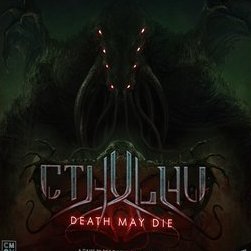
Cthulhu: Death may Die
Tabletop Game
In Cthulhu: Death May Die, inspired by the writings of H.P. Lovecraft, you and your fellow players...
Boardgames CMONgames LangGames DaviauGames CthulhuGames
